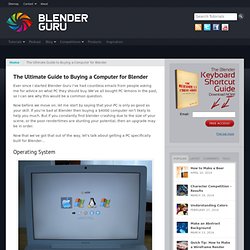

Graphics card. Nvidia GeForce GTX 660 Ti, Asus DirectCU II TOP, EVGA SuperClocked et AMD Radeon HD 7950 v2 en test. Nvidia poursuit la déclinaison vers le bas de son architecture Kepler avec l'arrivée de la GeForce GTX 660 Ti.

Très proche de la GeForce GTX 670 sur le plan des spécifications, elle pourrait s'avérer très intéressante pour les joueurs: nous en avons testé la version de référence ainsi que les modèles personnalisés d'Asus et d'EVGA. AMD a cependant bien l'intention de jouer les troubles fête avec la mise à jour des spécifications de la Radeon HD 7950… GK104 pour tous Contrairement à ce que vous pourriez penser, la GeForce GTX 660 Ti n'est pas basée sur un nouveau GPU, simplifié par rapport au haut de gamme actuel. Elle reprend le même GPU que les GeForce GTX 690, 680 et 670 : le GK104. Petit à petit il se décline dorénavant dans le segment "Performance", intermédiaire entre le milieu et le haut de gamme, et dans lequel nous retrouvons en général les solutions les plus intéressantes pour les joueurs qui recherchent un maximum de performances mais également un tarif plus raisonnable.
Blender Cycles GPU Hardware FAQ. Special thanks to Brecht van Lommel (lead Blender Cycles developer) for helping me getting to the bottom of this.Last update:Feb 14, 2013 @ 12:26 Short answer: Reducing tile size to get more VRAM has marginal effect.

Do this only if your scene is only a couple of MB too large to render on your GPU. You do get a bit better effect doing this if you have a lot of render passes though. Conversely, increasing tile size to speed up rendering works, but make sure that your tile sizes are whole fractions of the total scene out size. For example: a scene rendered in HD (1920×1080) could be rendered in 1920/4 x 1080/4 = 480 x 270. Very long answer:Recently the option to specify tile sizes in pixels ( x and y direction) has been added to Blender Cycles. But how do we optimize this? Impact on VRAM As it turns out, the tile size only impacts a small portion of the total VRAM your GPU requires to render a scene. Impact on speed There are some rules of thumb you should always keep in mind though:
The Ultimate Guide to Buying a Computer for Blender. Ever since I started Blender Guru I’ve had countless emails from people asking me for advice on what PC they should buy.

We’ve all bought PC lemons in the past, so I can see why this would be a common question. Now before we move on, let me start by saying that your PC is only as good as your skill. If you’re bad at Blender then buying a $4000 computer isn’t likely to help you much. But if you constantly find blender crashing due to the size of your scene, or the poor rendertimes are stunting your potential, then an upgrade may be in order. Now that we’ve got that out of the way, let’s talk about getting a PC specifically built for Blender… Operating System Photo by fosk Everyone has their own preferences in terms of usablity and stability, but for me the winner is Linux. However… what most users don’t tell you is that Ubuntu can be a royal pain in the arse to use. So for that reason I actually recommend Windows 7. EDIT January 2013: I’m hoping to try Linux again in the next few months.